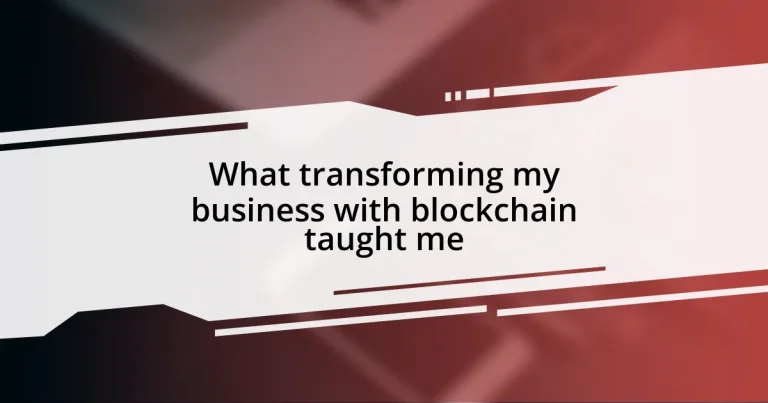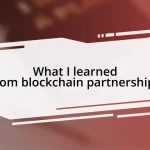Key takeaways:
- Business transformation necessitates embracing change and discomfort, leading to growth and efficiency.
- Understanding specific business needs for blockchain is crucial for successful implementation and enhancing client relationships.
- Measuring success goes beyond financial metrics to include intangible benefits like trust, collaboration, and user empowerment.
- Effective communication and adaptability are key to overcoming challenges during blockchain implementation.
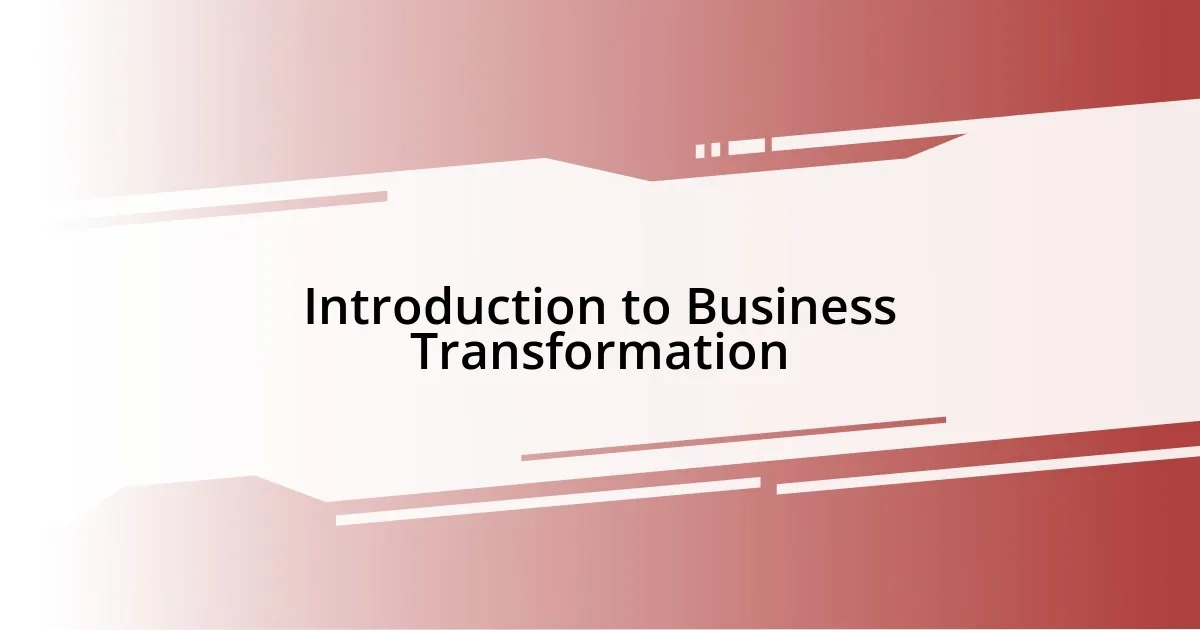
Introduction to Business Transformation
Business transformation is more than just a buzzword; it’s a profound shift that touches every aspect of an organization. I remember the moment I realized my business needed to adapt, standing at a crossroads where outdated practices stifled innovation. It made me wonder: how could I continue to serve my clients and grow in an ever-changing landscape?
Change can provoke fear, and I felt that anxiety keenly when I decided to implement new technologies. However, it’s essential to embrace this discomfort because it often precedes growth. I’ll never forget how a simple update in our processes led to a significant increase in efficiency, and that feeling of relief paired with excitement was transformative.
The journey of business transformation often feels like riding a rollercoaster—filled with exhilarating highs and daunting lows. As I navigated strategy shifts, I often asked myself if the risks outweighed the potential rewards. The truth is, those moments of uncertainty led to the most rewarding outcomes, teaching me that change can be a catalyst for not just survival but thriving in the marketplace.
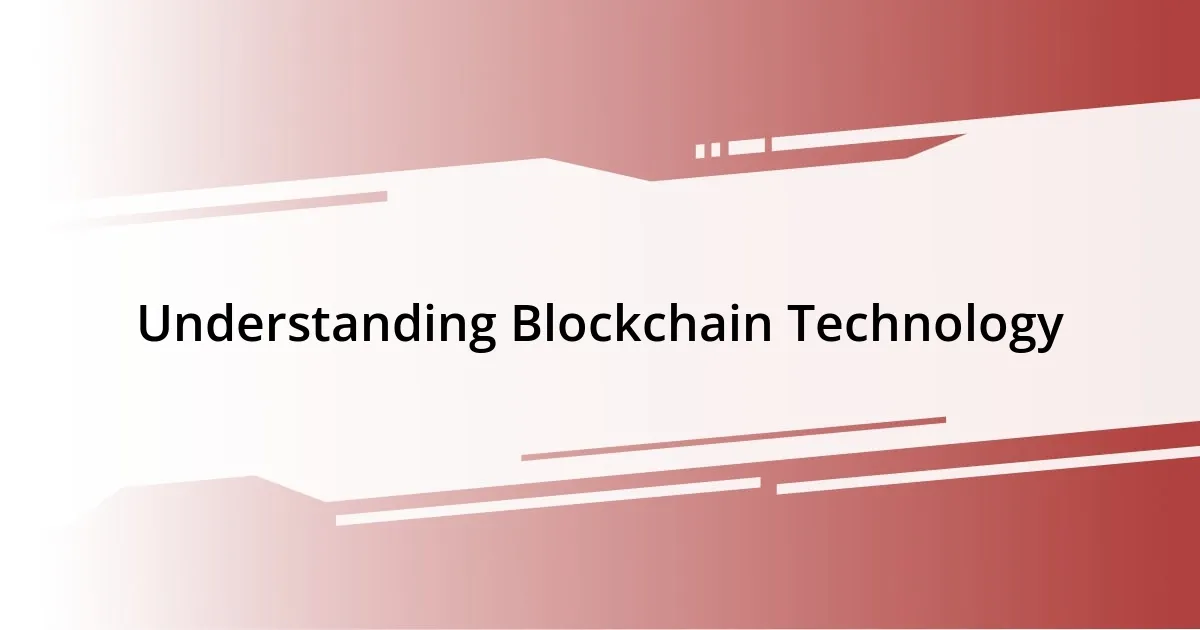
Understanding Blockchain Technology
Understanding Blockchain Technology is crucial for grasping how it can reshape business operations. Initially, I struggled with the concept, picturing it as just a digital ledger. However, as I delved deeper, I realized that its decentralized nature allows for greater transparency and security, fundamentally changing trust in transactions.
Here are some key aspects that helped me understand blockchain:
- Decentralization: Unlike traditional databases controlled by a single entity, blockchain is distributed across a network, reducing the risk of manipulation.
- Transparency: Every transaction is recorded publicly, creating an open environment where everyone can verify actions, promoting trust.
- Immutability: Once added, data cannot be altered, ensuring that historical records are preserved accurately.
- Smart Contracts: These are self-executing contracts with the terms directly written into code, automating processes and reducing the need for intermediaries.
Reflecting on my journey, I remember the moment a client expressed interest in the transparency that blockchain provided. Their enthusiasm drove me to explore the technology further, ultimately enhancing our service offerings. It’s this blend of innovative technology and genuine human connection that made the exploration of blockchain so rewarding.
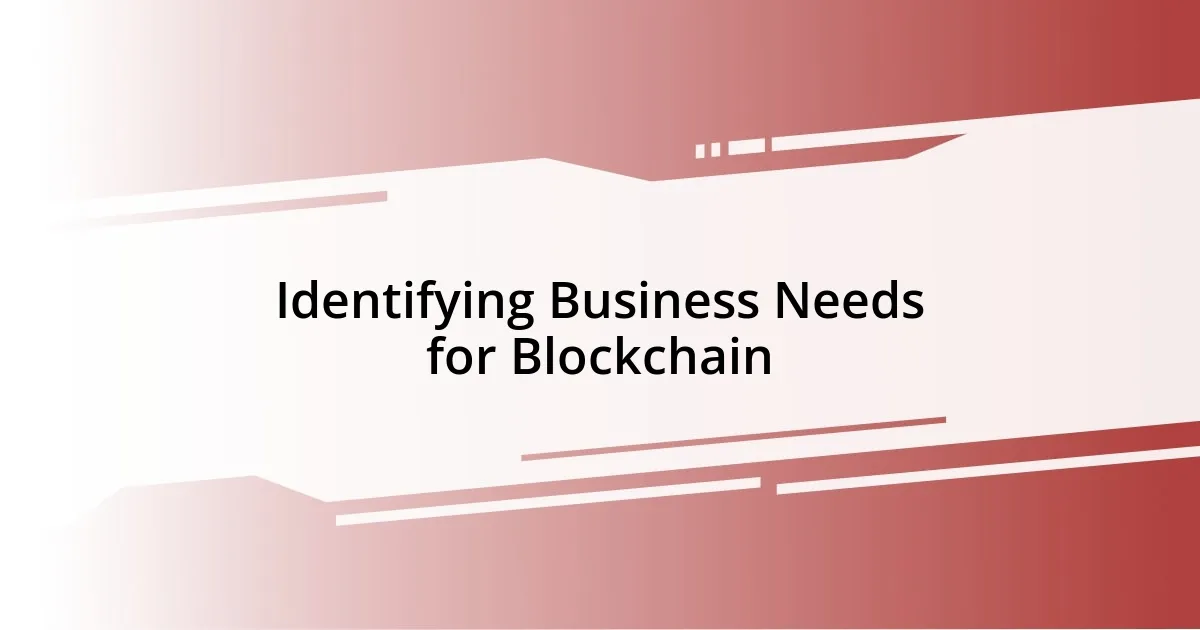
Identifying Business Needs for Blockchain
Identifying the specific needs of my business for implementing blockchain technology was a pivotal step. I recall a meeting with my team where we brainstormed our pain points. We identified inefficiencies in our supply chain that were costing us time and money. It dawned on me that integrating blockchain could automate parts of our process, fundamentally streamlining operations and reducing costs.
Understanding the needs of my clients was equally important. I had a client who often expressed frustration over transaction delays and a lack of transparency in our operations. This insight opened my eyes to the potential of blockchain to provide an immediate solution. By creating a system where transactions became instantaneous and verifiable, we weren’t just addressing a problem; we were transforming our relationship with clients.
In essence, this journey taught me that identifying business needs for blockchain goes beyond technological capability; it’s about understanding how these changes impact every facet of our operations and relationships. Realizing this made the implementation not just a choice but a strategic necessity, one that felt deeply personal as I watched our relationships and efficiencies grow stronger.
| Business Needs | Blockchain Solution |
|---|---|
| Supply Chain Efficiency | Automated Tracking and Transparency |
| Transaction Speed | Instantaneous Transactions via Smart Contracts |
| Client Trust | Publicly Verifiable Transactions |
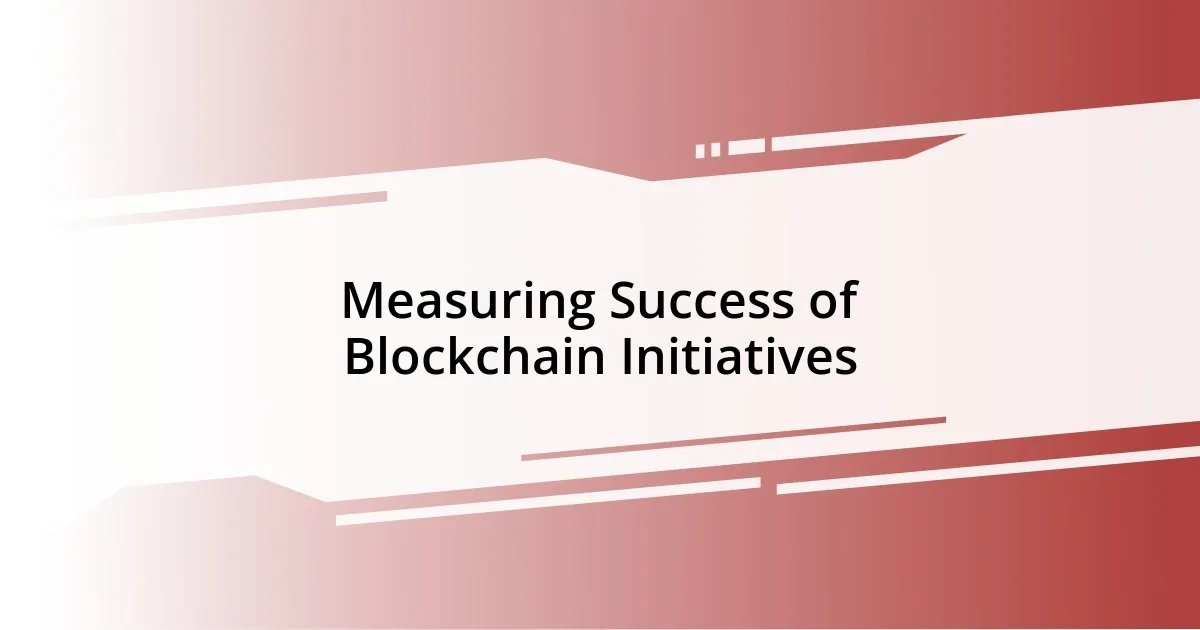
Measuring Success of Blockchain Initiatives
Measuring the success of blockchain initiatives is something I’ve come to appreciate significantly over time. Initially, I thought success would be merely reflected in financial metrics. However, I quickly realized that it’s also about understanding the intangible benefits, like enhanced trust and improved collaboration across teams. Was it worth the investment? Absolutely, the more I saw my team embracing blockchain, the clearer it became that our cultural shift was a critical success indicator.
I can’t help but think back to a project where we implemented blockchain for our supply chain. The reduction in errors was staggering! We measured success not just through cost savings but also by tracking the speed of our operations. Seeing the smiles on my team’s faces when transactions went through effortlessly was priceless. These emotional moments often resonate louder than any spreadsheet ever could.
Moreover, analyzing user adoption rates has been a gold mine of insights for me. I remember a specific instance when a skeptical team member came around and began advocating for our blockchain solutions. That shift in attitude wasn’t quantifiable in numbers but spoke volumes about the initiative’s real impact. To me, meaningful success isn’t only about metrics; it’s also about cultivating an environment where everyone feels empowered and trusted. How often do we measure our success through the lens of human connection? I think that’s an essential part of the blockchain narrative.
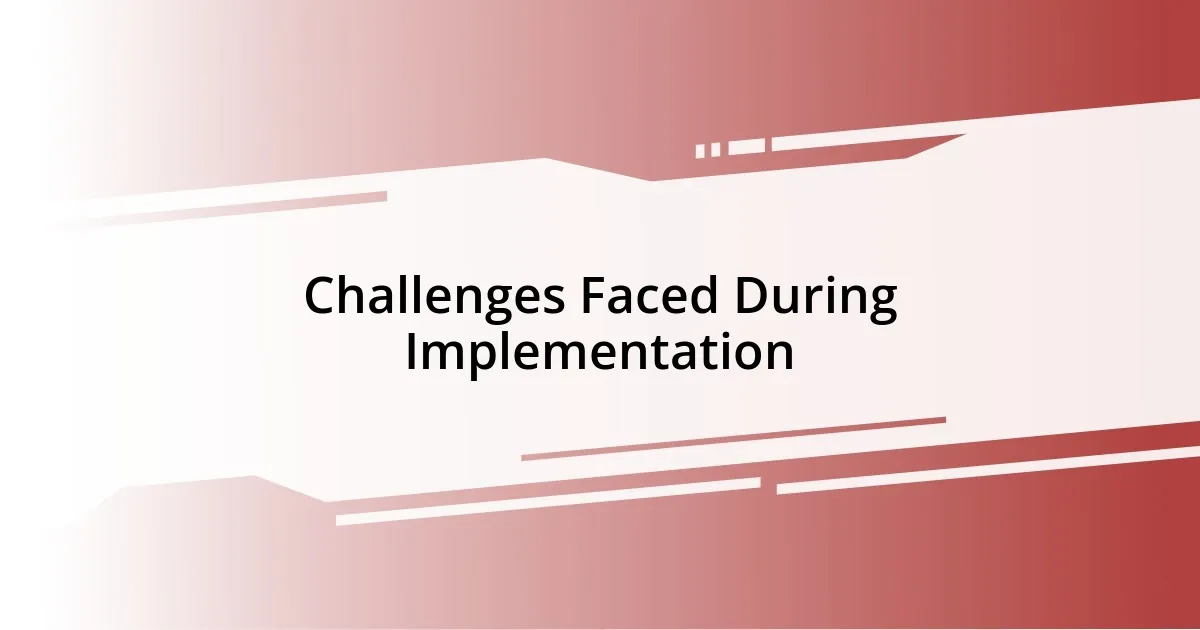
Challenges Faced During Implementation
Implementing blockchain wasn’t all smooth sailing; I encountered a few bumps along the way. One of the biggest hurdles was the initial resistance from my team. I remember a tense meeting where I proposed the transition, and some members were skeptical. They worried about the learning curve and whether it would truly benefit us. These concerns made me realize the importance of addressing not just the technology itself but the human emotions tied to change.
Another significant challenge involved integration with our existing systems. I had thought that adoption would be seamless, but as we dove into the technical details, it became apparent that the compatibility issues were more complex than anticipated. It sparked a flurry of late-night discussions and problem-solving sessions with our tech team. I’ll never forget the moment we finally unified our legacy systems with the new blockchain framework. The feeling of accomplishment was palpable, but it was a reminder that persistence and collaboration are key when introducing disruptive technology.
Lastly, navigating regulatory concerns was a considerable obstacle. I often found myself poring over legal texts, wondering if we were compliant with the emerging blockchain regulations. The fear of inadvertently running afoul of the law was daunting. I vividly recall reaching out to a blockchain consultant, whose expertise helped illuminate the path forward. Their guidance made all the difference, easing my anxieties and ensuring we were on the right side of compliance as we moved forward. Reflecting on these challenges, I can confidently say each hurdle taught me lessons that were instrumental in shaping my understanding of blockchain’s transformative power.
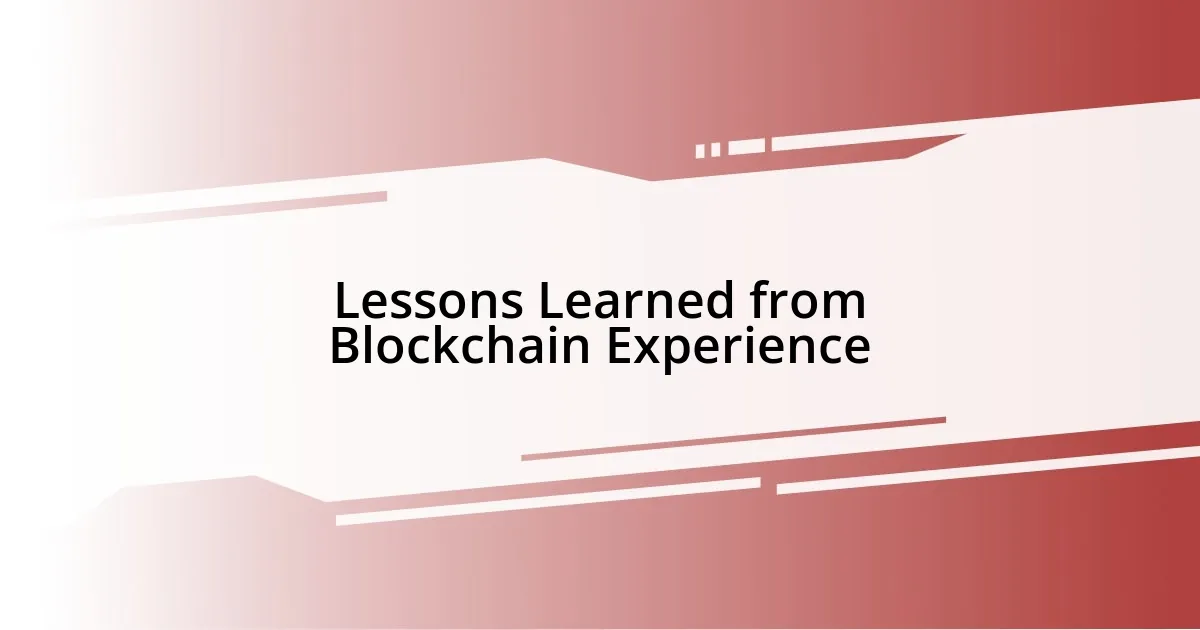
Lessons Learned from Blockchain Experience
Navigating the waters of blockchain implementation taught me patience and the art of communication. I remember one late evening, gathered with my team over pizza, passionately discussing the potential of blockchain. The enthusiasm in the room shifted when a team member voiced their fears about security breaches and data privacy. Their concerns forced me to step back and reflect: how well were we truly communicating the benefits of the technology? This moment highlighted the necessity of fostering an open dialogue, showing that addressing fears and concerns can sometimes be just as critical as the technology itself.
Another vivid lesson came from the endless iterations we went through. There was a point when we ended up scrapping a nearly finished project because it didn’t align with our initial vision. I felt frustrated, but it soon became clear that adaptability is crucial in this space. As I watched our team rally together to pivot and reimagine our approach, it dawned on me: resilience isn’t only about pushing through; it’s also about embracing failure as a stepping stone. Have you ever found yourself in a situation where failure taught you more than success? That’s the transformative magic of blockchain—its ability to push us beyond our comfort zones.
Lastly, I discovered the invaluable importance of user experience. I vividly recall a workshop we held to find out what users genuinely thought about our new blockchain solution. Their candid feedback was eye-opening; it revealed pain points I had never considered. By involving users early on, I learned that their insights could pave the way to creating a more intuitive product. This experience made me realize that technology isn’t just about the code; it’s about the people who use it. How often do we remember that human element when diving into the technical realm? It’s a lesson that continues to shape my approach today.












